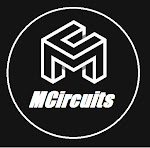Fuel + Ethanol = THE FACTS
1. The legal and manufacturer recommended limit for ethanol in conventional gas is 10%. The actual percent ethanol found at individual pumps/stations varies, and will change with each (daily) fuel delivery.
Note: On April 21st, 2009 the EPA received an application from ACE, Growth
Energy and 54 ethanol producers seeking to increase E10 to 15% ethanol.
Ethanol is usually added by the local fuel distributors/suppliers, not at the major gas brand company refineries. Gas stations are not legally required to monitor gas daily for accurate/exact percentage ethanol.
2. Several states still do not label pumps (E10 sticker) when ethanol alcohol is added to gas, including:
District of Columbia, Indiana, Kansas, Kentucky, Maryland, Michigan, Minnesota, Missouri, Nevada, New Jersey, North Carolina, and Ohio; New Hampshire may soon discontinue labeling.
3. Ethanol is an ethyl alcohol, renewable fuel and is used to oxygenate gas. Ethanol is a solvent, cleanser, degreaser, drying agent, antifreeze and octane enhancer. Petroleum oil fuel that contains ethanol will attract and absorb water; Oil (gas) and water do not mix.
4. Before switching to E-10, make sure to remove all gas from tank if containing MTBE. Also, remove all water, dirt, rust, and sediment from tank. Replace parts that are not resistant to alcohol. Plastic and rubber parts, hoses, and seals are most vulnerable. To be compatible with higher oxygen content of ethanol-blended gasoline, fuel system parts and pumps, piston and carburetor, oxygen sensors, may need to be changed or adjusted.
5. Replace the gas in your fuel tank at least every 1-3 weeks.
Shelf life of E-10 fuel is only about 3 months in an ideal environmental (low humidity) storage conditions.
6. Choose a higher octane premium E10 gasoline (91-93) when your engine is at greater risk; Extended storage, lives in a water environment, vented fuel tank in humid environment, etc. Lean, water-diluted fuel drops octane and causes fuel starvation.
7. Know the symptoms and negative effects of high alcohol and/or water contaminated gas.
ENGINE DAMAGE AND MALFUNCTION CAUSED BY ETHANOL OFTEN INCLUDES:
Stalling, hesitation during acceleration, clogged fuel filters and carburetor, damage to fuel and VRO pumps and pistons, damage to fuel injectors, disintegration and dissolving of engine parts (especially rubber and plastic), drying-out and cracking of parts, hoses and seals, and much more.
8. Frequently check gasoline for signs of water contamination (WC) and phase separation (PS). Two distinct layers can be seen after WC/PS. Alcohol and water combine and drop to the bottom of tank leaving an upper petroleum octane deficient layer. PS gas is contaminated and should not be used.
9. Prevent external water and moisture (high humidity) from coming in contact with E-10 gas.
Keep engine well lubricated to prevent water damage and rusting. Check that fuel lines are sealed and intact. If available for your engine, install a water separator filter of 10-12 microns.
10. Safely Removing Water from Phase Separated E10 Fuel:
Be aware that when E10 gas is phase-separated, the bottom layer contains both water and "octane-enhancing" ethanol. When you remove the water/ethanol lower layer, the upper petroleum layer becomes octane deficient. Drop usually equals 2 to 4 octane points. Running an engine on below recommended octane will cause drivability issues and parts damage (e.g. piston/valve damage).
11. Check your engine owner’s manual for recommended fuel type and octane rating.
Many older engines, luxury cars, classic cars, lawn and other small gas-powered equipment and several marine and motorcycle engines often prohibit or warn against the use of E10 and other alcohol gas blends. Marine engines have greatest risk for water absorption, corrosion, parts disintegration and engine damage.
12. Use caution when choosing gas additive products to "prevent" or "fix" E10 gasoline problems. Watch out for deceptive advertising by numerous new ethanol "miracle" product companies. Ethanol already in fuel (up to 10% legal max) often replaces your need for additional additives since it is a powerful solvent, cleanser, antifreeze, octane enhancer and water absorber
13. Avoid alcohol-based fuel additives and gas treatment products with E-10 fuel. Too much alcohol will increase your risk for engine damage. All current major engine manufacturer warranty statements prohibit use of gas with over 10% ethanol. (Excludes FFV's). Damage will not be covered when cause is contaminated gasoline. Octane boosters, fuel system cleaners and conditioners often contain ethyl alcohol.
14. Never use E85 fuel (85% alcohol) in an engine not designed for it. Check vehicle gas cap for E85 label.
15. Know the specific fuel laws and E10 labeling laws for your state. State-by-state laws vary widely and have changed often since the widespread distribution of ethanol. In 2008, several states passed laws to add ethanol to all public gas supply. Other states are now passing laws to leave ethanol out of premium gas...
This information is a general guideline only for conventional vehicles and gas-powered engines using E10 gasoline.
Subscribe to:
Post Comments
(
Atom
)


0 comments:
Post a Comment
If you have any inquiry about the post, you can contact me directly at my email address. Click ABOUT above and drop to contact to reveal it.Thank you.